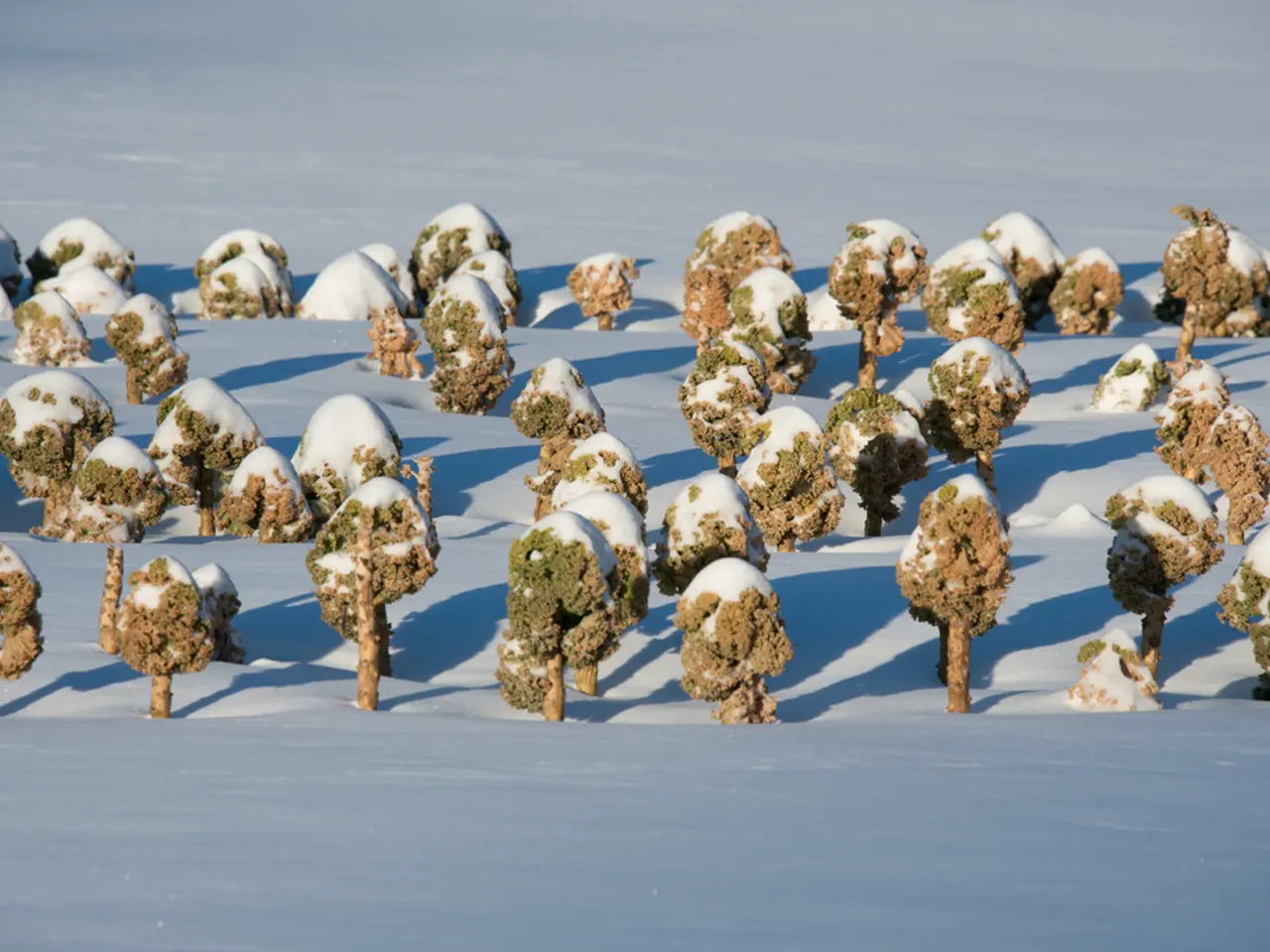Checking Snow Conditions on the Trail: A Guide
In the spirit of adventure and exploration, preparing for hiking trails in winter conditions is essential to ensure safety and enjoyment. Here's a guide on how to make informed decisions about trail safety using a variety of free and paid tools.
## Free Tools
1. **Trail Websites and Forums**: Many trail organizations, such as the Tahoe Rim Trail, regularly update their websites with snow levels, trail access, and other conditions. Online forums and social media groups dedicated to hiking and outdoor activities are excellent for gathering firsthand reports from other hikers.
2. **SNOTEL Sites**: The Natural Resources Conservation Service (NRCS) operates SNOTEL (Snow Telemetry) sites across the U.S., providing real-time data on snow depth and other weather conditions, which can be useful for assessing trail conditions.
3. **Avalanche Centers**: Local avalanche centers issue reports on avalanche risks and snowpack stability, offering crucial insights into potential hazards on trails.
## Paid Tools
1. **Avalanche Airbag Packs**: While not a direct condition-checking tool, avalanche airbag packs can reduce burial depth in case of an avalanche and are particularly useful in high-risk areas.
2. **Snow Study Kits**: Kits like the BCA Snow Study Kit help evaluate snowpack stability, which is essential for assessing avalanche risks.
3. **GPS and Satellite Devices**: Devices such as the Garmin inReach Explorer+ offer GPS tracking, two-way satellite messaging, and can be crucial for navigating remote trails and sending out distress signals if needed.
## Gathering Local Reports
1. **Local Guides and Rangers**: Contacting local guides or park rangers can provide valuable insights into current trail conditions and potential hazards.
2. **Social Media and Online Communities**: Following local hiking groups on social media platforms can give you access to real-time updates and photos from the trails.
3. **Trail Apps**: Apps like Trailforks (for mountain biking) provide user-generated reports on trail conditions, though they might not always be up-to-date.
## Tips for Using These Tools
- **Combine Information**: Use a combination of free and paid tools to get a comprehensive view of trail conditions. - **Check Regularly**: Conditions can change quickly, so it's important to check updates frequently before heading out. - **Be Prepared**: Always carry appropriate gear based on the conditions and potential risks identified through these tools.
By leveraging these resources, you can make informed decisions about trail safety and enjoy your hiking adventures with greater confidence. Some additional tools mentioned include Gaia GPS SNODAS Snow Layer, CalTopo SnoTel Stations, Park Conditions Pages, snowEvaluator, and Local Trail Associations.
Remember, it's always advisable to start hiking in the snow on easy trails, gain experience, prepare for all conditions, and understand the risks before tackling steeper slopes. Sometimes, ski resorts offer snowshoe trails as well.
Happy and safe hiking!
- When preparing for hiking trails in winter conditions, using trail websites and forums can provide essential updates on snow levels, trail access, and conditions.
- For assessing trail conditions, the Natural Resources Conservation Service (NRCS) SNOTEL (Snow Telemetry) sites offer real-time data on snow depth and weather conditions.
- Local avalanche centers provide crucial insights into potential avalanche risks and snowpack stability, thus helping hikers navigate high-risk areas safely.
- Avalanche airbag packs are a useful tool for reducing burial depth in case of an avalanche, but they don't directly offer condition-checking capabilities.
- To evaluate snowpack stability and assess avalanche risks, kits like the BCA Snow Study Kit can be vital for outdoor-living enthusiasts who engage in winter hiking and outdoor-living activities.




